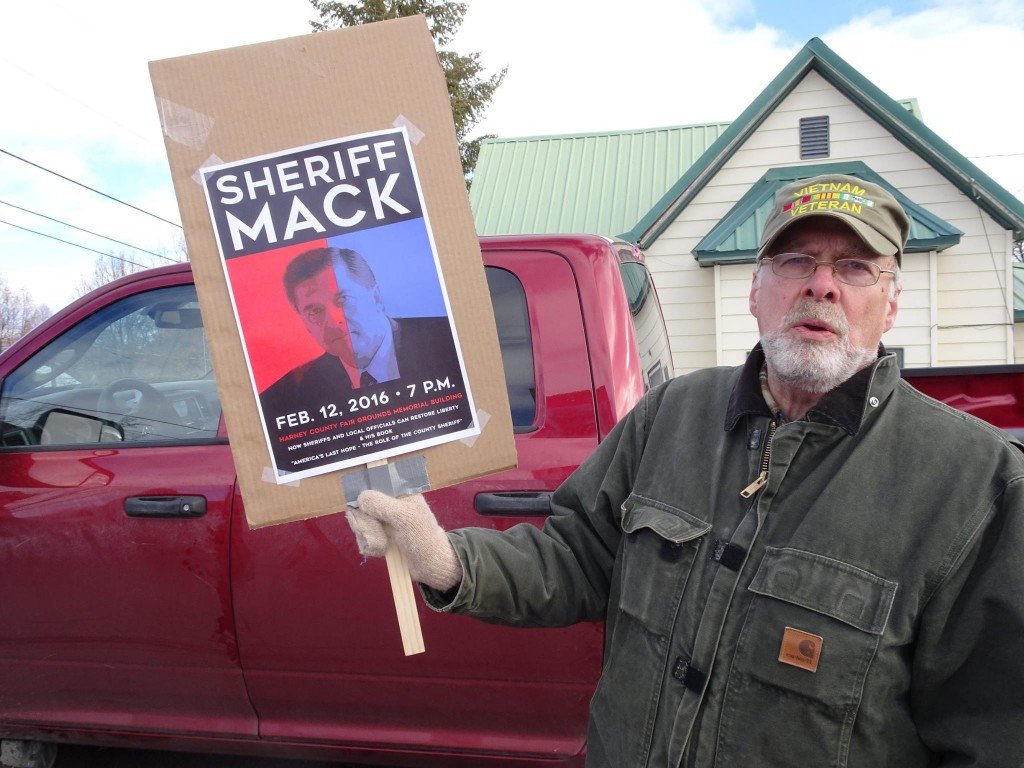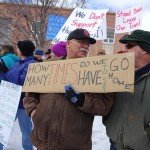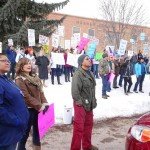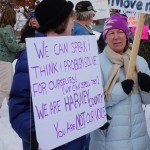Arrest of the leaders of the armed occupation of the Malheur National Wildlife Refuge may have brought one chapter in the saga to a close, but new data compiled by the Institute for Research and Education on Human Rights (IREHR) suggests that the standoff may have ignited new problems.
Beyond the damage to the refuge and the costs to the community, the standoff has stoked the so-called Three Percenters with many new recruits.
Since the start of the Malheur standoff, the ranks of the Three Percenters have swelled. New data derived from social networks shows the number of likes to the sixty-four Three Percenter Facebook pages that IREHR tracks increased more than 15% during January, climbing from 187,905 at the end of December to 216,334 at the end of January. In addition, the number of individuals joining one of the 264 closed online Three Percenter groups increased by more than 21% in the last month, up from 69,991 to 85,011 nationally.
MAP: Three Percenter Group Members – December 2015
Smoldering since formation in early 2009, the 2014 standoff at Cliven Bundy’s Nevada ranch fired up a national movement of the Three Percenters. The January 2016 Malheur standoff led to an explosion of movement growth. As the chart below indicates, movement growth had already been on the increase in 2015. Only 12,157 people were members of Three Percenter groups online before December 2014. By the end of 2015, those numbers increased to 69,991. Membership in these closed online groups shot up dramatically in January, as Three Percenter activity increased (as did media attention).
Chart: Three Percenter Member Growth
The data also suggests that standoffs and other conflicts may drive movement support. Noticeable upticks in membership occurred during standoff periods: in April – May during the Sugar Pine Mine standoff in Southwestern Oregon, in July – August during the White Hope Mine standoff in Montana, and the recent period. The growth occurred despite stay-away orders from many local Three Percenter leaders.
Another contributing growth factor during the July – August 2015 period was the fight over the Confederate battle flag in South Carolina after the Charleston massacre. A significant percentage of Three Percenters support the Confederate flag, and several Three Percenter groups have “Confederate” in the organizational name. As IREHR reported last month, the Confederate flag even flew at the rally from which the Malheur standoff emerged.
That might help explain that while the most visible manifestations of Three Percenter activity have occurred in the West, like the Tea Party, Three Percenter supporters are concentrated in the South, with 54% of identifiable support in the South, compared to 18% in the West, 17% in the Midwest, and 11% in the Northeast.
Though many Three Percenters are current or former Tea Party supporters, Three Percenter supporters are more male than the Tea Party movement. Among the Three Percenters that list their gender, 83% identify as male, while just 17% identify as female. By comparison, the Tea Party movement has remained roughly 2/3 male over the last five years.
Meanwhile, back in Oregon
Adding to the potential for future problems, the movement now has a martyr.
For most of the Malheur standoff, Three Percenter groups behind the Pacific Patriots Network had been on the perimeter of the fight—literally and figuratively. After the arrests of standoff leaders and the wind-down of the standoff portion of the conflict, the Three Percenters are once again at the center of fight with the issuance of a “call to action” which read,
“Come stand together with other Americans, and express our Constitutional right to PEACEFULLY assemble and air our grievances,” the call to action said. It called for the arrest of the law enforcement officers involved in the shooting that killed occupier LaVoy Finicum on Tuesday night, as well as for the departure of the federal authorities who have staked out the Malheur National Wildlife Center and for the resignations of some of the local officials in Harney County, Oregon.”
An unofficial spokesperson for the standoff, Robert “LaVoy” Finicum was shot by Oregon State Police after he fled a traffic stop in an SUV, tried to drive around a roadblock (nearly hitting a law enforcement officer), then reached for his gun while trying to flee on foot.
As part of that call to action, on February 1, the Three Percenters rallied around 250 people outside the Harney County Courthouse. Unlike the January Three Percenter rally in Burns, this time the Three Percenters were greeted by a counter-demonstration of more than 350 people who came out in support of law enforcement and to tell the Three Percenters to “go home!”
- Credit: Peter Walker
- Credit: Peter Walker
- Credit: Peter Walker
- Credit: Peter Walker
- Credit: Peter Walker
The Three Percenters are not yet going home. In fact, at the rally, many waved signs announcing another public meeting in town later this month featuring far-right former sheriff, Richard Mack (who was in attendance at the January 2 rally preceding the standoff).

There is much left to do–in Harney County, across Oregon, and nationally—to challenge the growth of the Three Percenters and the danger posed to democracy and human rights. IREHR will be looking more closely at the Three Percenters in coming weeks, and highlighting the courageous efforts to challenge this threat.










